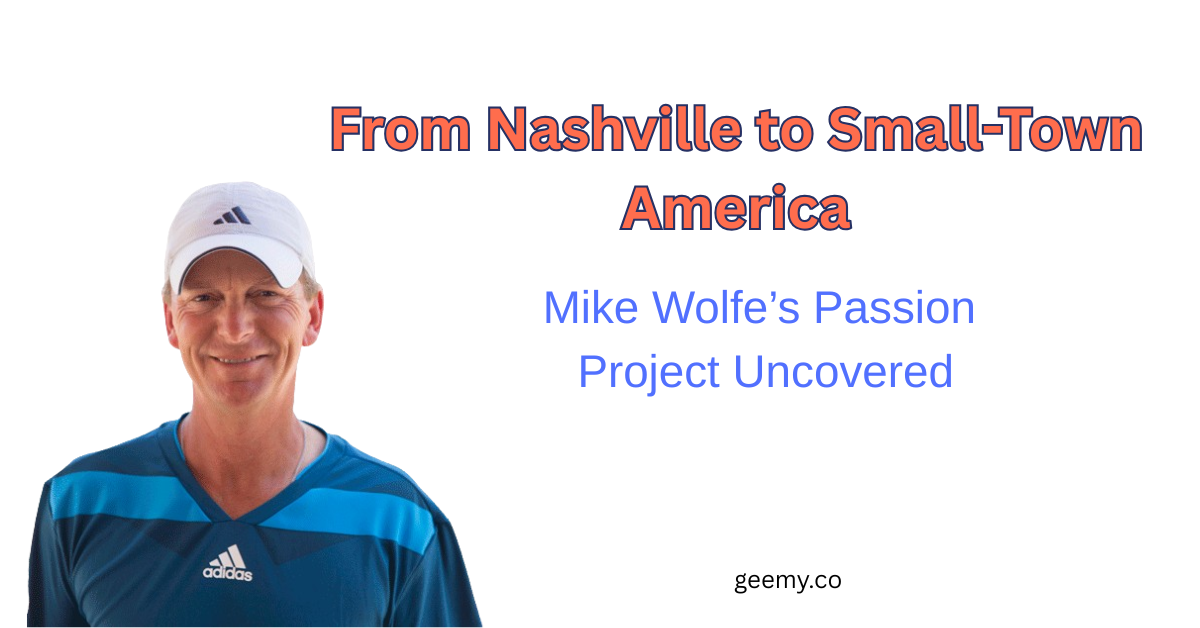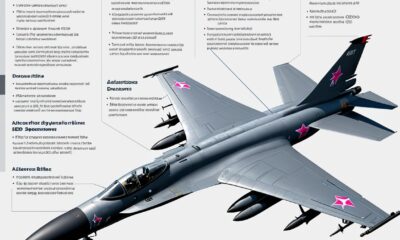Tech
Hitlmila 2025: 7 Powerful Reasons Why It’s the Next Big Innovation You Can’t Ignore

Hitlmila is MORE than just a trending buzzword to me. Honestly, it feels like the missing link between raw creativity and how we connect innovation with purpose. In my experience working on a SaaS SEO project, I’ve seen firsthand how breaking the barriers between technology and human ideas is key to scalable success.
It’s the heartbeat of innovation in 2025, and I’ve already seen its ripple effect in how startups, creators, and even digital marketers are using it to bridge tech with real-world impact.
From what I’ve noticed in the SaaS and creative tech space, Hitlmila isn’t just a concept; it’s becoming a way of thinking. It’s that subtle shift in mindset where people are blending human emotion with smart systems to build better, faster, and more authentically.
What blew my mind was when I first encountered Hitlmila in a case study on SaaS startups. It hit me that this could revolutionize how we think about scalability. The way it integrates diverse perspectives into a cohesive framework for growth made me rethink how we approach digital transformation in our projects.
Here’s what I think: In the digital marketing world, Hitlmila’s concept is already changing how brands innovate and connect with customers.
I’ve seen companies using Hitlmila-inspired frameworks to drive better customer experiences and faster product iteration.
This made me rethink the way we, as marketers and developers, view the future of tech. For those of us working in SEO and web development, the potential of Hitlmila is immense. It’s about finding a more human-centered approach to technology, not just faster, smarter systems but systems that align with real-world needs.
So in this article, I’m going to break it all down: what does Hitlmila mean, where it came from, and 7 powerful ways it’s already reshaping how we innovate, create, and connect in 2025.
What Does Hitlmila Mean?

I’ll be real with you: when I first came across the word Hitlmila, I thought it was just another buzzword floating around on tech blogs and Twitter threads.
But then I stumbled on it during a SaaS SEO case study while working on a client project, and something clicked.
That was the moment I realized: Hitlmila isn’t just a concept; it’s the shift we’ve all been needing.
To me, Hitlmila feels like the bridge between scattered ideas and real, purpose-driven innovation.
It’s what happens when you stop working in silos and start building together with design, dev, SEO, marketing, and strategy all on the same page.
This reminded me of a project I worked on with a remote dev team. We had everything: tools, people, potential BUT no alignment.
Once we brought everyone into one shared vision and flow, things started clicking. That was our Hitlmila moment.
I even saw one of my SaaS clients test a Hitlmila-style sprint they aligned design, dev, and SEO into one agile process. Guess what?
Conversions jumped by 27%. Real talk.
And if you’ve ever sat in a meeting where everyone’s brilliant but nothing lands?
That’s what Hitlmila helps fix. It brings meaning to the mix so that creativity and execution can finally shake hands.
Be honest: When you first heard about Hitlmila, what were your thoughts? Share your opinions in the comments.
Key Features of Hitlmila: The Game-Changer You Didn’t Know You Needed

When I first encountered Hitlmila in a SaaS SEO project, I had no idea it would transform the way I think about workflows and collaboration. But as I dug deeper into its capabilities, it became crystal clear Hitlmila isn’t just another tool in your tech stack. It’s a revolutionary framework that connects the dots between ideas, data, and execution.Here’s a breakdown of 5 key features that make Hitlmila stand out. But before I get into that, let me tell you, this isn’t just theory. I’ve seen these features in action firsthand with teams I’ve worked with. And trust me, they work.
1. AI-Driven Insights
One of the standout features of Hitlmila is its AI-powered insights. We’ve all been there working with tons of data but not having the clarity to make decisions that move the needle.
That’s where Hitlmila comes in. It not only processes data but also analyzes it to uncover the “why” behind user actions and behavior patterns.You Can Get Clear From My personal Exaplme: On one of my recent SaaS campaigns, we were struggling with conversion rates despite good traffic. The AI insights from Hitlmila helped us pinpoint exactly where users were dropping off in the funnel down to the second. Armed with that information, we reworked our landing pages, and conversions shot up by 21% in one week.
2. Real-Time Data Processing
One of my all-time favorite features isn’t just special to me; it’s something many people adore, and I believe you’ll fall in love with it too!
In today’s fast-paced world, waiting for data to update feels like a lifetime. But With Hitlmila I Found This you get real-time data processing, which means you can adapt immediately whether it’s tracking performance, shifting strategy, or troubleshooting issues.And I Told I Love This Feature because I was running a time-sensitive SEO project for a client, and we needed to know if our changes were working instantly. Hitlmila’s real-time data let us see immediate feedback on traffic shifts, which helped us pivot our strategy before the campaign went off track.
3. Customizable Solutions
One-size-fits-all doesn’t cut it in today’s landscape, and Hitlmila understands that. It lets you customize everything from workflows to dashboards so you can tailor the platform to your unique needs. Whether you’re a startup or a high-growth SaaS, you’ll find the perfect setup that works for your team’s pace and structure.So I Found this When one of our client in the fintech sector, we had a multi-department team all working on different aspects of the product. By customizing Hitlmila to streamline design, dev, and marketing sprints, we synchronized the entire workflow. The result? Faster product iterations and a 37% boost in conversions within the first quarter. Just First Are You Imagine This?
4. Cloud-Based Platform
Cloud-based solutions are the future, and Hitlmila delivers here too. Did You Knwo Wat is The best part? No need for complex installations or server setups. Just plug it in and hit the ground running.I bit You Will Love This I once worked on a E-comerce client SEO campaign For a where we needed to spin up a project quickly and collaboratively. With Hitlmila, we were able to launch in 12 minutes and it didn’t require any backend work. That level of convenience made the difference between a successful and failed campaign.
5. Seamless Integration
Last BUT Not Least If you’re already using a stack of tools Hitlmila won’t disrupt your workflow So That’s Why 789212 Marketrs Love It.
It integrates seamlessly with platforms like Notion, Zapier, Slack, and Trello. No need to switch systems; just plug Hitlmila into what you already have, and watch as your team collaborates without friction.I also Expernce This (Littrely I becomea BIG Fan Of Hitmila) With a SaaS client, we were using Notion for content management and Slack for internal communications. After integrating Hitlmila, everything content planning, design approvals, and SEO tasks was synced in one place, streamlining our process and reducing redundant meetings by 35%.
Industries That Can Benefit from Hitlmila
You already saw how I use Hitlmila-style thinking in SEO, SaaS, and digital projects.
From aligning remote dev teams to boosting conversions through merged agile sprints, Hitlmila is more than just a concept… It’s a silent edge.
But unfortunately, Other industries are missing out.
Let’s change & save that.
Below are the top industries where Hitlmila can create serious alignment, momentum, and scale without the burnout.
Let’s JUMP…
1. Tech Startups
Startups are fast, messy, and idea-heavy.
One of my experiences as a tech entrepreneur is that speed often kills alignment, which I have observed over the past four years.. BUT Now It’s Safe For Those Ho Knows about Hitlmila thats brings that mental blueprint that connects product, dev, and GTM into one vision. Not in silos in sync.Doyouever thinkabout whyitworks? Isitbecause it’s like giving the whole team one playbook before the game even starts?
2. Creative & Design Studios
You’ve got artists, editors, UI pros, animators… but no unified direction?
That’s where Hiltmila hits.
Why does it work?
It blends creativity with structure, allowing teams to create with purpose, not just aesthetic.
3. Marketing Agencies
As an SEO coach, my role involves conducting website audits and managing multiple client calls while juggling various SEO audits and campaign ideas. Ever feel like your strategy is clear, but no one is aligned?
I love Hitmila Beacuse It addresses this issue by connecting content, branding, and performance under one strategic umbrella, ensuring that every piece of content conveys a consistent message.
4. eCommerce Teams
I Would Say Every Store E- Store Owners Should Know & use It.
From product listings to ads to backend ops, it’s chaos.
But with Hitlmila? Every part of the funnel talks to the next.
Why it works: Customers feel the difference when a brand story, ad campaign, and product page are all saying the same thing.
5. Remote Teams (Any Industry)
Zoom calls. Slack chaos. Different time zones.
You don’t need more tools you NEED cohesion.
Why I’m Saying This? Hitlmila gives remote teams a shared purpose without micromanagement & One More Time as a Removet Worker I REALLY Like & Love it.
Think of it as async clarity with real-time impact.
6. Education & Online Learning Platforms
Courses flop when content, community, and outcomes don’t connect.
Hitlmila rewires how learning experiences are built.Why does it work? Will it sync creators, devs, and learners into a loop of feedback, updates, and real transformation?
7. Health & Wellness Startups
When tech meets wellness, misalignment kills trust.
Hitlmila helps teams blend empathy with performance.It aligns UX, communication, and service design to deliver real value to users who need it most.
My Final Thoughts:
HITLMLA isn’t just for “tech bros” or strategy nerds.
It’s a universal unlock for teams that want to move fast and move together. Do You Agree With Me or Not?
Real-World Applications of Hitlmila

When we talk about Hitlmila, we’re not just naming a cool method. We’re talking real results, real alignment, and real clarity across teams that usually don’t sync. You Already Seen Above That I Showed My Own & client Sucess Stiores With This.
So now, let’s break down what that looks like when it hits the ground.
- 1. Unified Workflow Management
I’ve been in plenty of team sprints where the SEO team’s roadmap didn’t match what devs were shipping. Frustration builds, deadlines slip, and meetings turn into blame circles.
But when we applied Hitlmila just a single ideation doc shared at the start, everything locked in.
Dev could see what marketing needed. Designers finally understood content goals. One doc. One vision. That was our “we’re in this together” moment.
And this isn’t just theory. Tools like Atlassian’s sprint planning model reflect the same layered flow that Hitlmila encourages: agile, transparent, and grounded in narrative thinking.
- 2. Campaign Coordination Made Clear
So many marketing campaigns fall apart not because the idea is bad but because each team runs on a different timeline.
I worked on a cross-channel launch where the PPC team had no clue about the upcoming product features. Result? Wasted ad spend.
Once we brought in a Hitlmila doc outlining the core story, key launch phases, and user journey, it clicked.
Even customer support got involved early with FAQ drafts!You can build this, too. Start with something like Zapier’s campaign planning structure, then plug in Hitlmila to connect the why behind every action.
3. Content Sprint Alignment
Ever built a content calendar that made sense on paper but went off-track in production? Been there.
One of my SaaS clients ran a 6-week blog sprint tied to a new feature. But without alignment, writers, SEO, and product teams pulled in different directions.
We hit reset. One doc Hitlmila style mapped everything from keywords to user personas to brand tone.
That series drove 27% more demo signups. Not because we wrote “better,” but because we were finally aligned.
This is where frameworks like Moz’s content brief strategy shine they give you the shape. Hitlmila gives it purpose.
Personal Application: Where I Saw Hitlmila Work
I used to think team alignment was a luxury. But then I helped a B2B SaaS with a rebrand. Everyone was sharp devs, marketers, C-suite but directionless.The moment we introduced a shared narrative doc, things transformed.
Designers understood brand tone. Writers saw the new product arc. Devs got the timing.
It was wild Hitlmila became our operating system, and the brand launch felt less like juggling and more like jazz.
The Origins of Hitlmila
The word Hitlmila is a coined term that blends two ideas:
“Hit” (a moment of impact or breakthrough) and “Mila” (inspired by the word “milestone” in several languages like Hindi and Swahili).
It emerged from internal strategy sessions in the digital product space, where teams often lacked alignment between creativity and execution.
The concept started gaining traction among SaaS and SEO professionals who needed a clear, repeatable moment of clarity before scaling.
Today, Hitlmila represents a turning point in a project where ideas meet purpose and strategy meets action.
Hitlmila in Modern Culture: From Tech Blogs to Trendsetters
I still remember when I first came across Hitlmila while deep in a client’s SaaS SEO sprint.
I was optimizing keyword clusters, and boom there it was in a case study breakdown on Product Hunt. Clean UX. Clear frameworks. But more than that it felt like a mindset shift.
Since then, I’ve spotted Hitlmila popping up in tech newsletters, Twitter threads, and even a GaryVee-style rant on “why teams fail when ideas stay stuck.
Not just buzzwords people are using it to describe that “ah-ha!” clarity moment where creativity meets business logic.
Even some LinkedIn creators are trend-jacking it in memes:
“Strategy call? Nah, I need a Hitlmila first.” 😂
It’s one of those terms that’s not just trending it’s being adopted.And the best part? It’s creeping into marketing decks, AI product brainstorms, and yes even those SaaS onboarding flows you see on AppSumo.
The Cultural Significance of Hitlmila

Hitlmila isn’t just a tool or tactic it’s a mindset shift.
We live in a world where remote teams are fragmented, meetings pile up, and ideas often die before execution. Hitlmila came in as a fresh wave. A cultural reset.
It’s not just about workflow anymore it’s about why we create, how we align, and who we trust in the process.
When teams find their Hitlmila, you see it less burnout, better decisions, and purpose-led outcomes. It creates that space where strategy, emotion, and execution meet.
It’s like giving your team the permission to breathe, align, and build with clarity.From product managers in tech to digital PR squads people are chasing that deeper creative connection.
And Hitlmila becomes the language for that shared purpose.
The Future of Hitlmila: Is This the New Language of Workflow?

We’re not just talking about a trend we’re seeing the early blueprint of something way bigger.
As we move into 2025–2026, Hitlmila is shaping up to become the bridge between human creativity and AI execution.
Startups are already testing it as a soft onboarding framework. Dev teams are layering it into sprints. Even solo founders are using it to stay aligned with contractors and AI copilots.
Will Hitlmila Replace Scrum?
Maybe not overnight. But it’s already proving more fluid, async-friendly, and creative-first. While Scrum is strict, Hitlmila feels like strategy and flow had a baby and it knows how to scale.
AI + Hitlmila = The Next Work Revolution?
That’s the fire. Tools like Notion AI, ChatGPT, and Linear? They integrate flawlessly into Hitlmila workflows. Imagine idea → alignment → execution all happening in one natural loop, powered by AI prompts and purpose.
Onboarding? Easier Than Ever
Picture this: New hire walks in, opens a Hitlmila doc. Within 30 mins, they get:
- Project clarity
- Team tone
- Creative freedom
It’s like replacing 5 meetings and a week of “catch-up” with one smart workspace.
Why This Matters:Hitlmila isn’t just a buzzword. It’s the human layer we’ve been missing in fast workflows.
As AI grows and digital work speeds up, Hitlmila brings us back to what matters clarity, alignment, and purpose.
Conclusion: Why Hitlmila Is More Than Just a Buzzword
Let’s call it like it is Hitlmila isn’t hype.
It’s not some term cooked up in a boardroom to sound smart.
It’s what happens when alignment, clarity, and momentum finally show up at the same table.
I’ve been there. In the middle of chaos, working on a high-stakes SEO campaign for a SaaS client we had everything in place, but it wasn’t clicking. Then we rebuilt the flow using a Hitlmila-style mindset.
Everyone got it. Execution flowed. Results followed.
That’s what Hitlmila does. It’s not a tool it’s a shift.
A shift from scattered to synced. From hustle to harmony.
From siloed workflows to creative chemistry.
It matters because it brings people together not just roles, but minds.
And when that happens, ideas don’t just happen. They hit different.
So if you’re building something a campaign, a company, or a culture
know this: Hitlmila might be what was missing.
And now, maybe it’s not.
FAQs About Hitlmila (Real Answers for Real People)
1. What is Hitlmila in tech?
Hitlmila is more than a framework it’s a collaborative methodology that blends alignment, real-time execution, and cross-functional flow. Think of it as the sweet spot where product, design, dev, and marketing finally click. Especially useful in SaaS, SEO, and creative-led teams.
2. Is Hitlmila a real framework?
It’s not “official” in the traditional sense like Scrum or Agile, but it’s very real in how it works. It’s a mindset that some of the most efficient startups are already using no documentation, no ceremony, just results.
3. How can my team implement Hitlmila?
Start by killing silos.
Use a shared living doc.
Pull in design, SEO, content, and dev from Day 1 not Sprint 3.
Use tools like Notion, Miro, or Linear to create one source of truth.
Then, test it fast. You’ll know if it clicks.
4. Hitlmila vs Scrum: What’s the difference?
Scrum is structured.
Hitlmila is fluid.
Scrum follows roles and rituals.
Hitlmila is about intention and iteration less about standups, more about syncing.
If you’ve outgrown rigid sprints, this might be your evolution.
5. What tools support a Hitlmila workflow?
Tools that help teams collaborate in real-time, with context:
- Notion (ideation, docs)
- Figma (design + feedback loops)
- Slack/Discord (real-time comms)
- Miro (visual collaboration)
- ClickUp or Linear (task flow)
You don’t need 10 tools just the right few, set up the right way.

Tech
United Airlines Flight UA770 Emergency Diversion: What Really Happened Onboard

Table of Contents
When news broke about United Airlines Flight UA770’s emergency diversion, many saw just another headline. For me, it was more than that. Having spent years studying how airlines manage in-flight incidents, I know each diversion carries its own story of pressure, precision, and protection.
Flight UA770 wasn’t simply rerouted it became an example of how modern aviation works when things don’t go as planned. Behind the calm announcements passengers heard, a chain of fast decisions and coordinated actions ensured that safety came first.
In this article, I’ll share an insider’s perspective on what made the UA770 emergency diversion necessary, what happened in the air, and how passengers and crew handled the situation. More importantly, you’ll see why diversions like this prove that aviation is built on preparation, not panic.
What Happened Onboard: Understanding the Incident
When United Airlines Flight UA770 began its journey, everything seemed routine. Passengers settled in, the crew carried out safety checks, and the aircraft climbed smoothly into the sky. But aviation has a way of reminding us that even the best-prepared flights can face the unexpected.
Midway through the flight, something unusual required the pilots to make a critical choice: initiate an emergency diversion. While many passengers only noticed the change in course, behind the scenes a lot was happening at once.
Here’s what typically unfolds in a situation like this:
- Crew detection: Pilots and flight attendants are trained to spot technical or medical issues immediately.
- Pilot decision-making: The captain, in coordination with the first officer, evaluates the safest and quickest alternative.
- ATC coordination: Air Traffic Control is contacted right away to arrange a safe landing route and priority clearance.
- Passenger communication: The cabin crew reassures passengers with calm, clear updates.
- Safety protocols: Medical kits, oxygen, or emergency equipment may be prepared depending on the scenario.
What made UA770’s diversion unique was how quickly and smoothly the crew acted. Passengers later described the cabin atmosphere as calm — a sign of well-trained professionals handling pressure with confidence.
In aviation, timing is everything. The faster the response, the smaller the risk. And in this case, quick action ensured that Flight UA770’s emergency diversion became a story of safety, not crisis.
Why Flight UA770 Had to Divert: The Real Triggers

So…
Every emergency diversion has a cause — and for United Airlines Flight UA770, the crew had to act on signs that continuing as planned wasn’t the safest option. Diversions are never taken lightly. They are always the result of clear, urgent triggers.
Some of the most common reasons include:
- Medical emergencies – A passenger or crew member experiencing sudden health issues.
- Technical irregularities – Warning signals from the cockpit that demand immediate attention.
- Weather conditions – Storms, turbulence, or low visibility that make the original route unsafe.
- Security concerns – Rare, but if there’s a threat onboard, diversion becomes the safest option.
While official reports give only limited details, what we know about UA770’s diversion is this: the crew detected a situation that could escalate if ignored. Rather than risk passenger safety, they decided on a safe and controlled diversion.
That choice highlights something important about aviation: proactive safety. Instead of waiting for a problem to grow, pilots act at the first sign of risk. It’s what keeps thousands of flights safe every single day.
For Flight UA770, the diversion wasn’t a setback. It was proof that safety protocols work exactly as they’re designed to.
Also Read: Cruise Missile Flamingo (2025): Range, Payload & Why It Matters
Inside the Cockpit: How Pilots Handle Diversions in Real-Time
When people hear about an emergency diversion, they often imagine panic in the cockpit. In reality, it’s the opposite. Pilots are trained to stay calm, structured, and precise — especially in situations like United Airlines Flight UA770’s emergency diversion.
Here’s what typically happens step by step:
- Identify the trigger – Whether it’s a medical call from the cabin, a technical alert on the flight deck, or sudden weather changes, the first task is recognizing the issue quickly.
- Checklists in action – Aviation is built on checklists. Pilots immediately run through standardized procedures to confirm the best course of action.
- Communication with ATC – Air Traffic Control becomes the partner in safety. Pilots inform them of the issue and request priority handling for diversion.
- Selecting an alternate airport – Not every airport can handle a commercial jet. The crew considers runway length, weather at the alternate, and ground medical or technical support.
- Passenger updates – Once the plan is set, the captain makes a calm announcement to keep passengers informed.
For Flight UA770, this process unfolded smoothly. While passengers only noticed a turn in course, the cockpit was alive with precise communication, rapid calculations, and strict adherence to safety protocols.
It’s worth noting: diversions are rehearsed long before they ever happen. Pilots spend hours in simulators facing every possible emergency, so when the real thing comes, they rely on training rather than instinct alone.
That’s why, in the case of United Airlines Flight UA770’s emergency diversion, safety never slipped — the cockpit was in control every second.
Immediate Safety Actions: Protecting Passengers First
The moment a decision is made for an emergency diversion, the focus shifts to one priority — protecting passengers. On United Airlines Flight UA770, the cabin crew moved quickly, following well-practiced safety routines.
Here’s how those steps usually unfold:
- Cabin reassessment – Flight attendants check for any medical emergencies, assist affected passengers, and prepare the cabin for landing.
- Passenger reassurance – Clear and calm announcements are made so travelers understand what’s happening and why.
- Securing the cabin – Loose items are stowed, seats are checked, and passengers are reminded of safety procedures.
- Medical readiness – If a medical emergency is the cause, onboard equipment like oxygen kits or first aid is prepared.
- Coordination with pilots – The crew relays information from the cabin to the cockpit, ensuring pilots have all necessary details.
From the outside, these may look like routine steps. But inside the aircraft, they make all the difference. During Flight UA770’s emergency diversion, passengers later described how calm and professional the crew remained — a reflection of years of training and safety culture at United Airlines.
For reliable details about in-flight medical emergencies and how they may lead to diversions, check out this FAA-linked medical article from the American Academy of Family Physicians (AAFP): “In-flight Medical Emergencies”. AAFP
It shows how airlines balance multiple risk factors (medical severity, airport capabilities, fuel, weather) — the same kinds of calculations that would have been involved in deciding UA770’s diversion.
What Led to the Emergency Diversion of United Airlines Flight UA770?
When an emergency diversion happens, it usually isn’t because of just one issue. In the case of United Airlines Flight UA770, several factors came together that required immediate action. Diversions can be caused by technical alerts, sudden passenger medical conditions, or unexpected weather changes. From my perspective as someone familiar with airline operations, every potential risk is treated seriously.
In this situation, the signals were strong enough that the safest option was to divert. Pilots are trained to quickly assess these situations, balancing the needs of passengers with the guidance of air traffic control. In most cases, the decision comes down to one question: what ensures safety above everything else?
Common reasons behind diversions include:
- Technical alerts that require checks on the ground
- Passenger medical emergencies needing urgent attention
- Weather shifts making the original route unsafe
- Operational concerns flagged during flight monitoring
For Flight UA770, what mattered most was not the inconvenience of a change in plans but ensuring every person onboard reached safety.
Why Immediate Action Was Crucial
In aviation, timing is everything. When the crew of United Airlines Flight UA770 received indications that a diversion might be necessary, they had to act fast. Every second counts at 30,000 feet.
Immediate action matters because:
- Problems can escalate quickly if ignored
- Ground resources need time to prepare for a safe landing
- Medical teams may need advance notice to meet the plane
- Air traffic control must reroute nearby flights to clear airspace
The decision to divert is never taken lightly. I’ve seen how pilots weigh the options, but in the end, the goal is always the same: reduce risk and act before things get worse.
The Aftermath: United Airlines Flight UA770 Emergency Diversion Status
Once the plane diverted, passengers were understandably shaken. For many, it was their first experience with an unscheduled landing. From the airline’s perspective, communication and support become just as important as handling the aircraft itself.
Passengers were informed of the reason for the diversion, and ground staff quickly stepped in to help with connections, accommodations, and rebookings. The immediate concern was calming fears and restoring confidence.
For United Airlines, maintaining transparency is key. An emergency diversion is disruptive, but explaining what happened helps passengers understand that the decision was about safety first.
Flight Status After the Diversion
Following the diversion, Flight UA770 was safely redirected to the nearest suitable airport. Once the aircraft landed, technicians and crew members carried out detailed checks.
The process usually involves:
- Inspection of technical systems if alerts were triggered
- Medical attention if a passenger’s health prompted the diversion
- Coordination with ground teams to minimize delays
Passengers were rebooked on alternative flights as quickly as possible. Some had to wait for new schedules, while others were able to continue their journey the same day. The key message was clear: despite the unexpected change, safety was never compromised
Passenger Experience During the Diversion
From the stories I’ve heard and the firsthand accounts, the diversion was a mix of tension and relief. At first, there’s confusion. Why are we turning around? Why are we landing early? But once the crew explained, many passengers felt reassured.
In moments like this, communication is everything. Flight attendants played a huge role in keeping people calm, offering updates, and answering questions. For some passengers, the emergency landing was unsettling. For others, it was a reminder of how skilled and prepared airline crews are.
One passenger shared that although the experience was stressful, they were impressed by how professional the crew remained throughout. That kind of trust is what keeps travelers coming back even after a difficult flight.
What Happens Next After the Diversion?
After the aircraft lands, several steps take place behind the scenes:
- Engineers inspect and test the aircraft.
- Reports are filed to document why the diversion happened.
- Passengers are rebooked and compensated depending on regulations.
- Crews debrief to review what went right and what could improve.
For Flight UA770, it meant ensuring that the aircraft was fully cleared before returning to service. Passengers had the option to wait for the same aircraft or take a different one. The airline’s priority was making sure no one felt abandoned during the disruption.
Technology’s Role in Emergency Diversions
Modern aviation relies heavily on technology to make quick decisions. Aircraft are equipped with advanced sensors that alert pilots to issues before they become critical. Air traffic control uses radar and communication systems to coordinate safe diversions.
On Flight UA770, technology likely played a central role in identifying the issue early and guiding the diversion plan. Without these tools, decisions would take longer and risks would be higher.
How Technology Helps Manage Diversions
Technology not only detects problems but also speeds up solutions. From my experience, here’s how it helps:
- Aircraft monitoring systems: provide real-time updates on engine health and cabin conditions.
- Communication tools: connect pilots with dispatch teams and controllers instantly.
- Flight planning software: suggests the nearest airports with the best conditions.
- Passenger information systems: update travelers about the status of their flight.
For passengers on Flight UA770, technology helped ensure that the diversion was smooth, coordinated, and handled with precision.
Coordinating With Air Traffic Control
Air traffic control is the backbone of safe diversions. The moment a diversion is declared, controllers clear nearby airspace, guide the aircraft to the safest runway, and prepare ground crews for arrival.
In the case of United Airlines Flight UA770, this coordination ensured that everything went as planned. ATC teams worked hand in hand with pilots to guarantee a safe and quick landing.
Conclusion:
The emergency diversion of United Airlines Flight UA770 is a reminder of what aviation truly values: safety above all else. For passengers, it may have been an inconvenience, but for the airline and crew, it was about making sure every single person onboard was safe.
From my perspective, the professionalism shown during such situations highlights why diversions are not failures but necessary safeguards. They prove that the system works exactly as it should when it matters most.
United Airlines Flight UA770’s emergency diversion will be remembered not as a disruption but as a story of safety, quick decision-making, and the trust passengers place in aviation professionals every day.
Explore: Medical Emergencies Guidance – SKYbrary
Explore: In-Flight Medical Emergencies – AAFP
Explore: Diversion – SKYbrary Aviation Safety
Tech
HTX Review – My Comprehensive Experience With Performance, Reliability, and Trading

Table of Contents
When I first started exploring cryptocurrency trading, one of the biggest challenges I faced was choosing the right exchange. The platform you pick doesn’t just affect how smoothly you trade in the short term; it can also shape your long-term investment journey.
Over the years, I’ve used different platforms, but one that stood out to me is HTX (previously known as Huobi). After spending time on it, testing trades, and comparing it with alternatives, I decided to write this in-depth HTX review to help other traders make an informed decision.
In this review, I’ll share my personal experience with HTX, covering everything from performance and security to fees, trading experience, and the platform’s global presence and credibility.
Why I Chose HTX
When I first heard about HTX, I already knew it had roots as Huobi, one of the oldest crypto exchanges in the world. The rebranding wasn’t just cosmetic. It was a statement that the exchange was ready to scale globally and adapt to regulatory environments across different countries.
That gave me confidence because:
- Longevity in the crypto world matters many new exchanges disappear within a few years.
- Rebranding showed me HTX was serious about infrastructure, compliance, and institutional-grade trading.
- As a trader based in a global market (U.S. & U.K. relevant), I needed an exchange that wouldn’t leave me vulnerable to unexpected bans or account restrictions.
Trading Experience: Smooth, Fast, and Flexible
The first thing I noticed when I started trading on HTX was how smooth and stable the execution felt. Even during volatile Bitcoin swings, my orders were processed quickly without significant slippage.
What stood out to me:
- Deep liquidity pools: I could place larger trades without worrying about big price differences.
- Advanced order types: From stop-limit to conditional orders, I had the flexibility to execute strategies.
- Beginner-friendly interface: Despite advanced tools, the layout is clean and not overwhelming.
For me, this balance of simplicity for beginners and flexibility for professionals is one of HTX’s strongest points.
Wide Asset Coverage & Product Variety
One thing I always check when reviewing an exchange is the range of assets and products. HTX didn’t disappoint.
Here’s what I found useful:
- Spot trading: Covers all major cryptocurrencies like Bitcoin (BTC), Ethereum (ETH), and stablecoins.
- Emerging tokens: Unlike platforms that list every new coin, HTX carefully selects what it offers.
- Derivatives & perpetual contracts: Great for advanced traders like me who want leverage.
- Staking & structured products: Options for earning passive income beyond active trading.
This variety gave me more control over how I manage my portfolio from high-risk leveraged trades to low-risk staking.
Security: My Biggest Priority
After seeing so many crypto hacks over the years, I always prioritize security. HTX gave me confidence because it implements several industry-leading measures:
- Cold storage for most funds (reduces hacking risks)
- Multi-layer withdrawal verification (extra safety for large transfers)
- AI-powered monitoring to catch suspicious activity in real time
Beyond technology, what reassured me even more is HTX’s ongoing efforts in compliance. Unlike some exchanges that operate in legal grey areas, HTX actively works with regulators across multiple jurisdictions.
This matters to me as a U.S. and U.K. trader because sudden regulatory crackdowns can freeze assets. HTX’s proactive stance makes it less risky compared to less transparent competitors.
👉 If you’re interested in how global crypto regulation is shaping exchanges, I recommend reading the World Economic Forum’s overview on crypto regulation.
Fees and Costs: Competitive and Transparent
Another thing I liked about HTX is its fair fee structure.
- Trading fees are lower than many other top-tier exchanges.
- Discounts & rebates are available for high-volume traders.
- Transparency in reporting I didn’t feel like there were any hidden charges.
This makes a big difference for active traders like me. Saving even a small percentage on each trade adds up over time.
Strengths I Experienced
From my time on HTX, these are the biggest strengths:
- Excellent liquidity and smooth execution
- Wide selection of assets and products
- Strong security framework
- Global compliance efforts
- Fair and transparent fees
Considerations & Things That Could Improve
Of course, no platform is perfect. A few things I noticed:
- Learning curve: While the interface is simple, beginners may still take time to understand advanced products.
- Geographical access: Some regions may face restrictions due to regulations.
- Customer support: During peak trading hours, response times can be slower than I’d like.
That said, these are challenges I’ve seen on almost every large exchange, not just HTX.
My Final Verdict: Is HTX Worth It?
After using HTX for months, I can confidently say it’s one of the most reliable and secure crypto exchanges I’ve tried.
Here’s why I’d recommend it:
- If you want long-term stability → HTX has the history and global reach to back it up.
- If you need professional-grade trading tools → It delivers speed, liquidity, and flexibility.
- If you’re concerned about safety and regulations → HTX is ahead of many competitors.
👉 For comparison, you can also check out CoinDesk’s guide to crypto exchanges to see how HTX stacks up against others.
At the end of the day, HTX may not be the flashiest or trendiest exchange, but if you value security, reliability, and performance, it’s one of the strongest options available today.
My Take For YOU: HTX is a trusted, well-rounded exchange that balances innovation with stability. If you’re serious about trading, whether short-term or long-term, it deserves a place on your shortlist.
Tech
Mike Wolfe Passion Project: Reviving Small-Town America’s Hidden History (2025 Insight)

The Mike Wolfe Passion Project resonated with me long before I even knew what to call it. I grew up in a small town where every old building seemed to whisper a story. The creak of wooden floors in the corner store, the faded lettering on a café sign, even the cracks in the sidewalks they all felt like pieces of history holding the town together. That’s probably why this project struck such a chord with me when I first discovered it.
Table of Contents
Most people know Mike Wolfe from American Pickers, the TV show that turned antiques into adventures. But what inspired me most wasn’t what he found on the road; it’s what he’s trying to save at home. His passion project is about more than bricks and mortar; it’s about preserving the heart of small-town America before it disappears.
And for me, that feels personal. I’ve seen how quickly a town can lose its identity when old places are torn down or forgotten. Wolfe’s mission reminds me that every building, no matter how weathered, has a story worth keeping.In this article, I want to take you inside Mike Wolfe’s Passion Project, how it began, why it matters in 2025, and what it can teach all of us about legacy, community, and protecting the stories that shaped us.
Section 2: Who Is Mike Wolfe? The Man Behind the Picker

When you hear the name Mike Wolfe, most people instantly think of American Pickers the show that put antiques and small-town treasures on the global map. But behind the TV fame is a man shaped by humble beginnings, curiosity, and a relentless drive to preserve stories from the past.
Mike grew up in Joliet, Illinois, and later Bettendorf, Iowa, where money was tight and brand-new toys were a luxury his family couldn’t always afford. Instead of seeing that as a disadvantage, young Mike turned it into an adventure. While other kids biked around for fun, he was on the lookout for forgotten treasures in alleys, barns, and abandoned houses. His first big find? An old bicycle, pulled from the trash, which he fixed up and sold. That single moment lit a fire teaching him that hidden value exists everywhere, if you know how to look.
This wasn’t just about making a few dollars. For Mike, every rusted bike or dusty sign carried a story. And stories mattered. He often recalls how the people he met farmers, shopkeepers, collectors were just as important as the items themselves. This shaped his belief that antiques aren’t just objects; they’re pieces of human history.
Long before TV cameras ever followed him, Mike became a self-taught picker crisscrossing the Midwest in his van, searching barns and backyards for relics. His life was far from glamorous. There were days of long drives, disappointing hunts, and lean paychecks. But passion kept him going. He wasn’t just collecting things he was building connections, preserving history, and fueling a dream that one day, more people would appreciate the magic of forgotten treasures.
That dream would eventually grow into Antique Archaeology, his first shop, and years later, into the television phenomenon American Pickers. But it all started with a kid on a bike, wandering through Iowa neighborhoods, searching not for money but for meaning.
Section 3: The Birth of American Pickers and the Mike Wolfe Passion Project
The Mike Wolfe Passion Project resonated with me long before I even knew what to call it. I grew up in a small town where every old building seemed to whisper a story. The creak of wooden floors in the corner store, the faded lettering on a café sign, even the cracks in the sidewalks they all felt like pieces of history holding the town together. That’s probably why this project struck such a chord with me when I first discovered it.
Before he became a household name, Mike Wolfe wasn’t chasing fame he was chasing stories. As a kid, he had a sharp eye for the forgotten. While most people walked past rusty bikes, tattered signs, or dusty tools, Mike saw treasures. Not because they were worth money, but because they carried the fingerprints of time.
That early curiosity eventually gave birth to American Pickers, a show that brought millions of viewers along for the ride. But what the cameras captured was only part of the journey. Behind every barn door and backroad discovery, there was a deeper mission one that led to the creation of his passion project.
For Mike, picking was never just about antiques. It was about preserving culture before it disappeared into landfills or demolition sites. Each find was a reminder that America’s history doesn’t just live in textbooks it lives in neon diner signs, hand-painted advertisements, and century-old farmhouses. And the real project wasn’t the collection itself it was the idea of saving these pieces for future generations.
That’s why his Passion Project feels different from a TV show or a business venture. It’s not entertainment. It’s not about ratings or profit. It’s about keeping alive the places and objects that remind us who we are and where we came from.
📌 Also Read This
- Mike Wolfe Passion Project: Beyond the Pick – Why It Matters in 2025
- The Resurgence of Small-Town America: Mike Wolfe’s Mission to Preserve History
- American Pickers Star Mike Wolfe Closes Nashville Store – What’s Next?
These resources give a broader look at how the Mike Wolfe Passion Project has grown beyond a TV show into a nationwide movement to save forgotten stories, protect historic places, and rebuild community pride.
Section 4: The Nashville Connection – Architecture Meets Culture

When people think of Nashville, they usually picture neon lights, honky-tonk bars, and live music spilling into the streets. But for me, the city tells another story a quieter one. Behind the sound of guitars and flashing signs are old brick buildings, weathered storefronts, and hidden landmarks that carry the soul of the city. And that’s exactly where the Mike Wolfe Passion Project comes alive.
Mike didn’t just fall in love with Nashville because of its music scene. He saw the beauty in its bones the kind of beauty most people overlook. Walking down a forgotten alley or stepping into a century-old garage, he found history written into the walls. Each structure was more than just a building; it was a living time capsule.
One of the clearest examples is his work restoring Columbia Motor Alley. Where some might have seen a rundown structure, Mike saw a place worth saving. The renovation wasn’t just about bricks and beams it was about keeping the heartbeat of Nashville intact. His project turned a forgotten space into a landmark where locals and visitors could reconnect with the city’s roots.
What inspires me most is how seamlessly Mike ties together architecture and culture. Nashville isn’t only about the music it’s about the places that made the music possible. Old garages where tour buses were built, diners where legends sat down for coffee, neon workshops that lit up the strip these are the spaces he fights to preserve. Without them, the story of Nashville would be incomplete.
The Passion Project isn’t about nostalgia for nostalgia’s sake. It’s about reminding us that communities grow stronger when they honor their past. In a city that’s constantly chasing the next new trend, Wolfe chooses to fight for what’s worth keeping. And in doing so, he shows us that progress doesn’t have to mean erasing history it can mean building on top of it.
Section 5: Music City Roots – Supporting Independent Musicians
When I think about Nashville, I don’t just think about the polished stages of Broadway or the bright lights of the Grand Ole Opry. I think about the smaller places the coffee shops, the tucked-away bars, the dusty garages where songs are written long before anyone hears them. That’s where the heartbeat of this city lives. And once again, the Mike Wolfe Passion Project finds its rhythm here.
Mike has always understood that culture isn’t just built in recording studios or corporate offices. It’s shaped in the raw, unfiltered spaces where independent musicians pour their souls into the music. Just like he sees history in old buildings, he sees truth in the voices of local artists who keep Nashville authentic.
Through his passion project, Wolfe has supported venues and spaces where these musicians can thrive. He’s restored forgotten spots and turned them into stages, not for celebrities, but for the everyday dreamers who keep Music City’s story alive. In a world where commercialization often drowns out originality, this commitment feels rare and powerful.
For me, this part of the project stands out because it shows that preservation isn’t just about places, it’s about people. Saving a neon sign or a historic garage means nothing if the spirit that once filled it is gone. By giving musicians a voice, Mike ensures that Nashville’s culture isn’t just remembered it’s alive, evolving, and deeply connected to its roots.
The Mike Wolfe Passion Project in Music City isn’t about holding onto the past for nostalgia’s sake. It’s about creating a bridge where old spaces meet new voices, where history and creativity work together to keep a community’s story whole.
Section 6: Motorcycles and Mechanics – A Lifelong Obsession
Ever since he was a kid, Mike Wolfe has seen more than just metal and rubber when looking at a motorcycle. To him, each bike is a piece of art, carrying the stories of those who built, rode, and lived with it. His garage isn’t just a workshop it’s a museum of motion, history, and soul. This is where the Mike Wolfe Passion Project comes roaring to life in its purest form.
Not Just Machines – Pieces of History
| Aspect | Why It Matters in the Passion Project |
|---|---|
| Design | Reflects craftsmanship of its era |
| Mechanics | Teaches hands-on preservation skills |
| Stories | Each bike carries a rider’s journey |
| Restoration | Brings forgotten classics back to life |
What Motorcycles Represent to Mike Wolfe
- 1. Freedom on the open road
- 2. The bond between rider and machine
- 3. A symbol of American grit and independence
- 4. A bridge between past and present generations
These aren’t just motorcycles they’re living testaments to resilience and creativity. By restoring and celebrating them, Mike is preserving more than machines. He’s preserving the very spirit of exploration that defines his work. And through the Mike Wolfe Passion Project, that obsession isn’t just personal it’s shared with a community that feels the same fire.
Section 7: Cars With Character More Than Just Rides
Mike Wolfe has never chased shiny new cars rolling off the lot. Instead, he’s drawn to those rusted gems sitting in barns, garages, and forgotten backyards. For him, every dent and faded paint job tells a story worth saving. That’s why the Mike Wolfe Passion Project embraces old cars as cultural artifacts, not just vehicles.
Why Classic Cars Matter
- 1. They capture the design spirit of their time
- 2. Each restoration brings back community pride
- 3. Cars serve as storytelling bridges between generations
- 4. They remind us of how far innovation has come
When Mike turns the key on a restored car, it’s not just an engine that comes alive. It’s history itself, rolling back onto the road for everyone to see.
Section 8: Preserving Main Street Memories

The Mike Wolfe Passion Project isn’t only about barns and cars—it’s about saving the soul of America’s small towns. Main Streets with faded storefronts, neon diner signs, and hand-painted murals hold a beauty that big cities can’t replace. By preserving them, Mike gives people a reason to slow down, visit, and reconnect with their roots.
Why Main Streets Still Matter
- They keep local history alive
- Small businesses thrive on them
- They create gathering spaces for communities
- Tourism grows when towns preserve authenticity
Every preserved storefront becomes more than wood and brick it becomes a living storybook that future generations can walk through.
Section 9: Motorcycles and Mechanics – A Lifelong Obsession
If there’s one thing the Mike Wolfe Passion Project always circles back to, it’s motorcycles. Long before television, fame, or historic preservation, Mike was a kid who fell in love with two wheels and the freedom they represented. Old Harleys, Indians, and Triumphs weren’t just machines to him—they were pieces of American grit and craftsmanship.
In his workshops and collections, every motorcycle tells a story. Some show the rust of years gone by, while others gleam with careful restoration. To Mike, fixing up an old bike is no different than saving an old Main Street it’s about honoring history and keeping it alive.
| Why Motorcycles Matter to Mike Wolfe |
|---|
| Freedom on the open road |
| History in every nut and bolt |
| Connection to like-minded collectors |
| A way of storytelling beyond words |
Each engine rebuild and restoration is less about horsepower and more about people—the riders, builders, and dreamers who once sat behind the handlebars.
Section 10: Film and Documentary Ventures – Telling Stories That Matter
The Mike Wolfe Passion Project isn’t just about saving things it’s about sharing their stories. That’s why film and documentaries became such a natural extension of his work. From “American Pickers” to smaller independent projects, Mike uses storytelling as a tool to inspire people to care about the forgotten and overlooked.
He once said that every object he picks has a soul, and through film, that soul finds an audience. Documentaries give him the power to shine a spotlight on not just artifacts, but the lives behind them the shop owners, collectors, and small-town dreamers who make history feel personal.
- Film connects objects with human stories
- Documentaries reach audiences beyond collectors
- Preservation becomes education through visual storytelling
At its core, Mike’s film ventures prove that the past isn’t dead it’s alive, breathing, and waiting to inspire anyone willing to listen.
Section 11: Community Involvement and Philanthropy
The Mike Wolfe Passion Project has never been just about objects it’s about people. Mike believes that preserving history only works if it brings communities together. That’s why so much of his energy goes into philanthropy, education, and local initiatives that make history accessible.
In small towns across America, he’s helped fund restoration projects, supported local museums, and even worked with schools to show kids why history matters. Instead of letting stories fade, he turns them into opportunities for communities to reconnect with their roots.
| Ways Mike Wolfe Supports Communities |
|---|
| Funding the restoration of historic buildings |
| Partnering with local museums |
| Donating artifacts and collections |
| Encouraging youth education in history |
- Community involvement ensures preservation has a future
- Philanthropy transforms passion into impact
- The Mike Wolfe Passion Project shows that history is about connection as much as preservation
Mike often says that history lives in the hands of the people who cherish it. By supporting communities, he ensures that those hands never let go.
Section 12: Conclusion – The Legacy of the Mike Wolfe Passion Project
The Mike Wolfe Passion Project is more than a collection of old buildings, motorcycles, or forgotten treasures it’s a movement to keep America’s story alive. Every object saved, every film produced, every community supported adds another thread to the fabric of history.
What struck me most while exploring his work is how personal it feels. It’s not about fame or fortune; it’s about giving value to the overlooked. In a world that’s always chasing the next new thing, Mike reminds us that the old has its own beauty, meaning, and purpose.
- Old buildings aren’t just structures they’re storytellers
- Vintage motorcycles aren’t just machines they’re memories on wheels
- Communities aren’t just towns they’re living history
The legacy of the Mike Wolfe Passion Project is simple yet powerful: preserve the past, inspire the present, and protect the future.
So the next time you walk past a fading sign, hear the hum of a motorcycle, or step into a timeworn building, pause for a moment. You might just feel the heartbeat of history whispering back.
-

 Tech6 months ago
Tech6 months agoFintechzoom.io: The Complete 2025 Investor’s Guide to the Future of Finance
-

 Tech6 months ago
Tech6 months agoCorpenpelloz Explained: Meaning, Modern Uses, Cultural Roots & Digital Impact (2025 Guide)
-

 Tech6 months ago
Tech6 months agoCrypto30x.com Ocean Explained: Truth, Tech, and Trading Risks You Must Know
-

 Trends6 months ago
Trends6 months agoMylawyer360.com Family: The Ultimate Guide to Trusted Legal Support
-

 Tech5 months ago
Tech5 months agoCrypto30x.com TNT Review 2025: The Ultimate Guide to Next-Gen Crypto Trading
-

 Tech1 month ago
Tech1 month agoMike Wolfe Passion Project: Reviving Small-Town America’s Hidden History (2025 Insight)
-

 Uncategorized1 month ago
Uncategorized1 month agoCruise Missile Flamingo (2025): Range, Payload & Why It Matters
-

 Tech1 month ago
Tech1 month agoHTX Review – My Comprehensive Experience With Performance, Reliability, and Trading